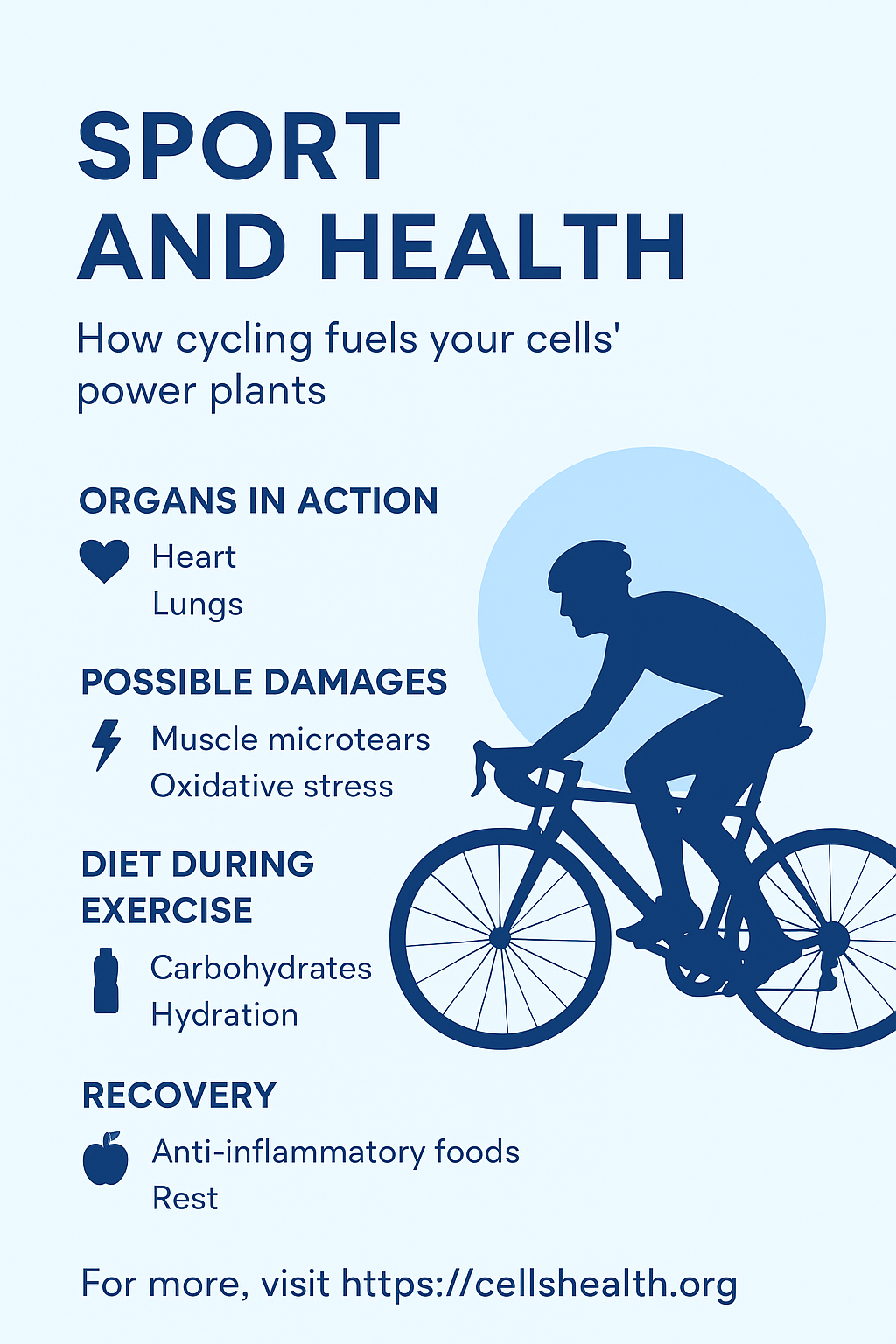From endurance to recovery, how cyclists’ cells win the race before the finish line.
Every pedal stroke in cycling is not just about moving the wheels forward, it’s about igniting billions of mitochondria inside your cells. These tiny “power plants” transform oxygen and nutrients into energy, fueling your muscles, heart, and brain. In Rwanda this September 2025, as the world gathers for the global cycling competition, both competitors and fans will witness not just speed, but the miracle of cellular endurance.
When a cyclist climbs a steep hill or sprints to the finish line, their heart pounds, lungs expand, and leg muscles burn with intensity. What’s happening inside is a symphony: the heart pushes oxygen-rich blood, the lungs supply that oxygen, and the mitochondria in every muscle cell convert it into pure energy.
But this symphony comes at a cost: oxidative stress, muscle microtears, dehydration, and energy drain. Without the right preparation, nutrition, and recovery, even the strongest cyclist may face fatigue, cramps, or slow healing. The good news? Science and smart nutrition can keep both cells and performance at their peak.
1. Organs that Work the Most in Cycling
- Heart: Pumps 6–8 liters of blood per minute in elite athletes.
- Lungs: Oxygen demand rises up to 10 times compared to rest.
- Muscles: Quadriceps, hamstrings, calves, and glutes work nonstop, powered by mitochondria.
- Liver & Kidneys: Manage glycogen release and fluid balance.
- Brain: Directs focus, balance, and motivation — highly sensitive to dehydration.
2. Risks & Damages from Intense Cycling
- Muscle microtears → cause soreness.
- Oxidative stress → damages mitochondria if antioxidants are low.
- Joint stress (knees, hips) → from repetition.
- Electrolyte loss → cramps and irregular heartbeat.
- Temporary immune suppression → open window for infections.
3. Nutrition During Cycling & Competitions
- Carbs: 30–60g/hour (bananas, gels, honey water).
- Hydration: 500–750ml/hour with electrolytes (Na, K, Mg).
- Proteins: Light intake in longer races to prevent muscle breakdown.
4. Recovery Strategies (Golden Hour)
- First 30–60 min after race: best time to restore glycogen and repair muscle.
- Optimal ratio: 3:1 carb-to-protein (e.g., smoothie with yogurt + berries).
- Hydrate with electrolytes, then add omega-3s (chia, flax, avocado) for inflammation control.
- Rest & active recovery: stretching, yoga, deep sleep.
5. Best Plants & Fruits for Recovery
- Bananas: potassium & quick carbs.
- Berries: antioxidants against oxidative stress.
- Beetroot: nitrates enhance oxygen efficiency.
- Pineapple: bromelain reduces inflammation.
- Avocado: healthy fats + potassium.
- Spinach & kale: magnesium, iron.
- Watermelon: hydration & citrulline for better blood flow.
Cycling is not just a sport, it is a dialogue between your body and your cells. Every pedal you push strengthens your mitochondria, every breath fuels your power plants, and every recovery meal helps repair your internal engines.
Whether you are an athlete competing in Rwanda’s world cycling event or a fan cheering on the roads, remember: your health is powered at the cellular level.
Do you want give much more to your cells for a better recovery? Don’t skip it! It’s very important.
Be Safe and Healthy

